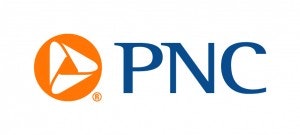With much of the focus this morning on the poor showing of big bank stocks in light of ‘s earnings, PNC Financial Services (NYSE:PNC)‘s first-quarter earnings of $1.76 per share have gone relatively unnoticed. The bank’s stock was up as much as 2.2% earlier this morning, and though it retreated a bit as the day went on, it was still an impressive showing from the Pittsburgh bank.

However, with the quarter at an end, those earnings have been relegated to history and the past. What’s really important about PNC Financial Services (NYSE:PNC)’s release was what it says about the future, and I think that investors are now looking at three reasons the bank is now a better buy than before.
1. Income and revenue increases
PNC Financial Services (NYSE:PNC)’s EPS of $1.76 was pretty impressive, especially considering that analysts were expecting $1.57 per share. Its net income of $1.0 billion represented a 23.8% increase from the first quarter of last year. This was aided by a 6% increase in total revenue from the same period, but also a reduction in expenses during the quarter.
One quarter does not necessarily make for a great year, but there are worse ways to start off a new fiscal year. If the bank manages to at least match the first quarter’s earnings in each subsequent quarter, PNC Financial Services (NYSE:PNC) would be on its way to exceeding last year’s $3.4 billion in net income. I think that’s something PNC investors would appreciate.
2. Decline in noninterest expenses
Perhaps the biggest driver in the increased net income at PNC Financial Services (NYSE:PNC) was a 15% decline in noninterest expense from the fourth quarter of 2012, and a 2% reduction from the same quarter last year. Various factors contributed to this decline, including reduced expenses relating to residential mortgage foreclosures, and the absence of costs associated with the integration of branches acquired from RBC (USA), the retail banking subsidiary of Royal Bank of Canada (TSE:RY) in March 2012.
Perhaps more telling was the bank expressing that it was on pace to generate $700 million in savings during 2013. Pending any new acquisitions this year, and the acquisition and integration expenses that come along with them, a savings of this much would only serve to increase the bank’s bottom-line performance going forward.
3. Improved asset quality
The aforementioned reduction in expenses relating to residential mortgage foreclosure was most likely a result of the continued improvement of the bank’s balance sheet, particularly regarding nonperforming assets. Despite a slight increase during the first quarter due to new regulatory guidance, nonperforming assets have declined by 10%since the first quarter of last year.
